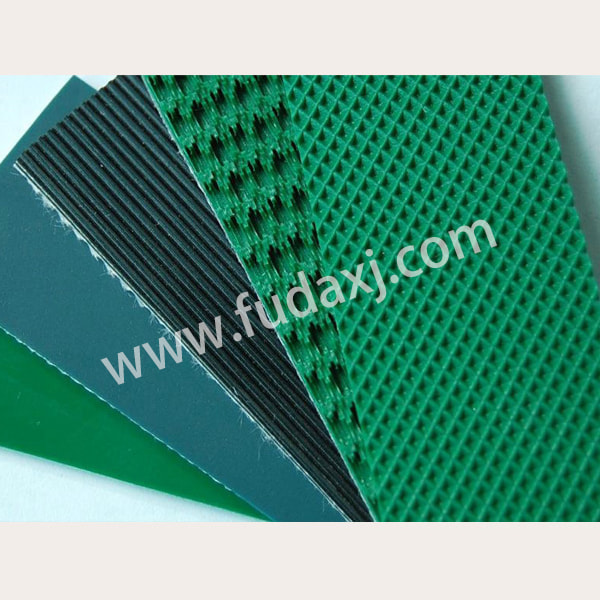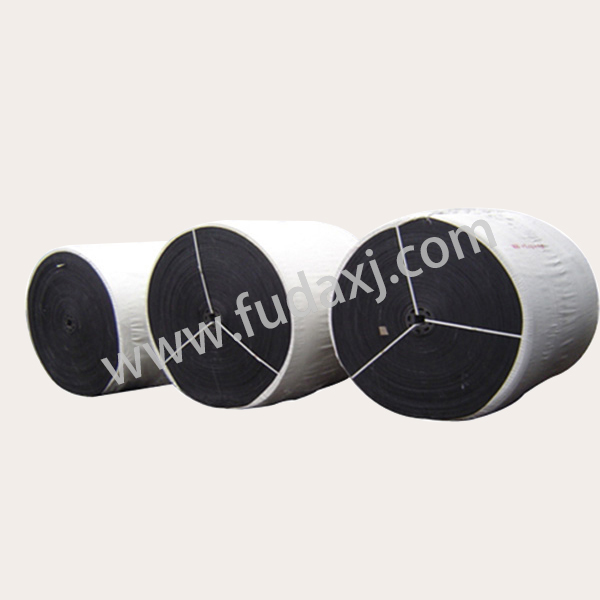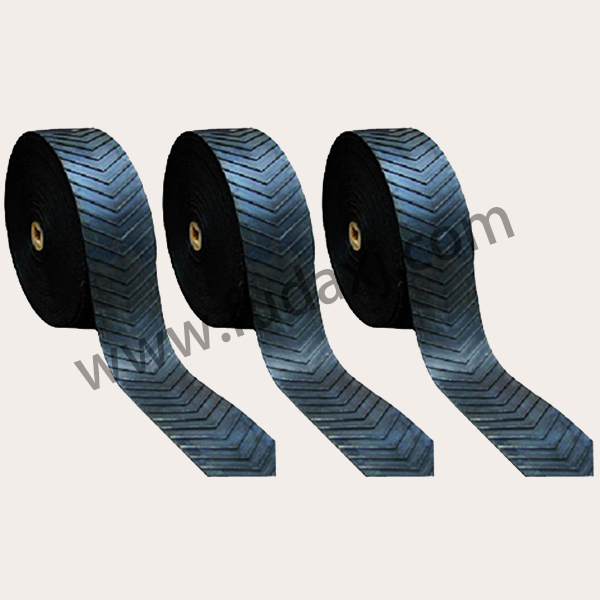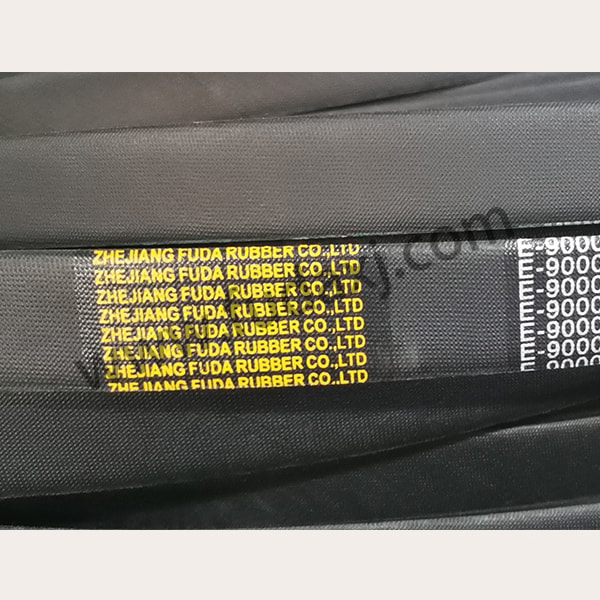
Chevron conveyor belts are specifically designed to enhance grip and stability when moving materials on steep inclines. These belts feature a patterned surface that helps prevent material slippage, making them ideal for industries that require reliable and efficient transportation of bulk materials at angles.
Chevron conveyor belts differ from flat belts due to their distinctive V-shaped or U-shaped patterns molded into the surface. These raised patterns, often referred to as cleats, provide additional friction and support, preventing materials from sliding backward when moving upward or downward.
Key design features of chevron conveyor belts include:
Chevron Patterns: Available in different heights and designs, such as open V, closed V, and U patterns, to suit various materials and angles.
Rubber or Synthetic Base: The base material is reinforced with layers of fabric or metal for added durability.
Flexible Cleat Design: The chevron patterns are designed to maintain flexibility while ensuring proper material grip.
These features make chevron conveyor belts suitable for transporting both lightweight and heavy materials under challenging conditions.
Due to their ability to handle inclined transportation efficiently, chevron conveyor belts are widely used in several industries:
Mining operations require reliable conveyor systems to transport ores, coal, and aggregates. Chevron belts are particularly useful for carrying loose or granular materials up steep slopes, preventing rollback and ensuring continuous movement.
Agricultural processes involve the movement of grain, fertilizers, and harvested crops. Chevron belts facilitate the smooth transport of these materials, especially when loading or unloading silos, storage bins, and trucks.
Cement plants and construction sites use conveyor belts to transport sand, gravel, and cement mixtures. The raised patterns on chevron belts provide the necessary grip to move these materials efficiently.
Waste handling facilities use conveyor belts to transport paper, plastic, metal scraps, and other materials. Chevron conveyor belts prevent materials from slipping, ensuring proper sorting and processing.
In sawmills and lumber facilities, conveyor belts transport logs, wood chips, and processed timber. Chevron designs assist in maintaining stability when moving irregularly shaped materials.
Chevron conveyor belts offer several advantages over flat conveyor belts, particularly in inclined material handling:
Enhanced Grip and Traction: The raised patterns reduce slippage, ensuring materials stay in place.
Improved Transport Efficiency: Designed to carry materials at steeper angles without compromising performance.
Durability and Wear Resistance: Made from reinforced materials to withstand abrasive conditions.
Versatility: Suitable for various industries and adaptable to different conveyor configurations.
Low Maintenance Needs: The structured surface smalls material loss and reduces operational disruptions.
These characteristics contribute to smoother and more reliable material handling in demanding industrial environments.
To big the performance and longevity of Chevron conveyor belts, proper selection and maintenance are essential. Key factors to consider when choosing a chevron belt include:
Chevron Pattern and Height – Selecting the appropriate pattern depends on the material being transported and the incline angle.
Belt Material and Reinforcement – Ensuring compatibility with the working environment to enhance durability.
Load Capacity and Belt Width – Matching the belt size to the specific operational needs.
For maintenance, the following practices help ensure reliable performance:
Routine Inspection: Checking for wear, tears, or misalignment to prevent operational delays.
Regular Cleaning: Removing debris and buildup that could affect belt traction.
Proper Tensioning: Maintaining good belt tension to prevent unnecessary stress on the belt and conveyor system.
Chevron conveyor belts are an essential component in industries that require inclined material handling. Their unique cleat patterns enhance grip, ensuring stable and efficient transportation of bulk materials. From mining and agriculture to construction and waste management, these belts provide a practical solution for moving materials under challenging conditions.
 English
English 简体中文
简体中文 Español
Español عرب
عرب
 English
English





 Fax: 0086-576-83019528
Fax: 0086-576-83019528